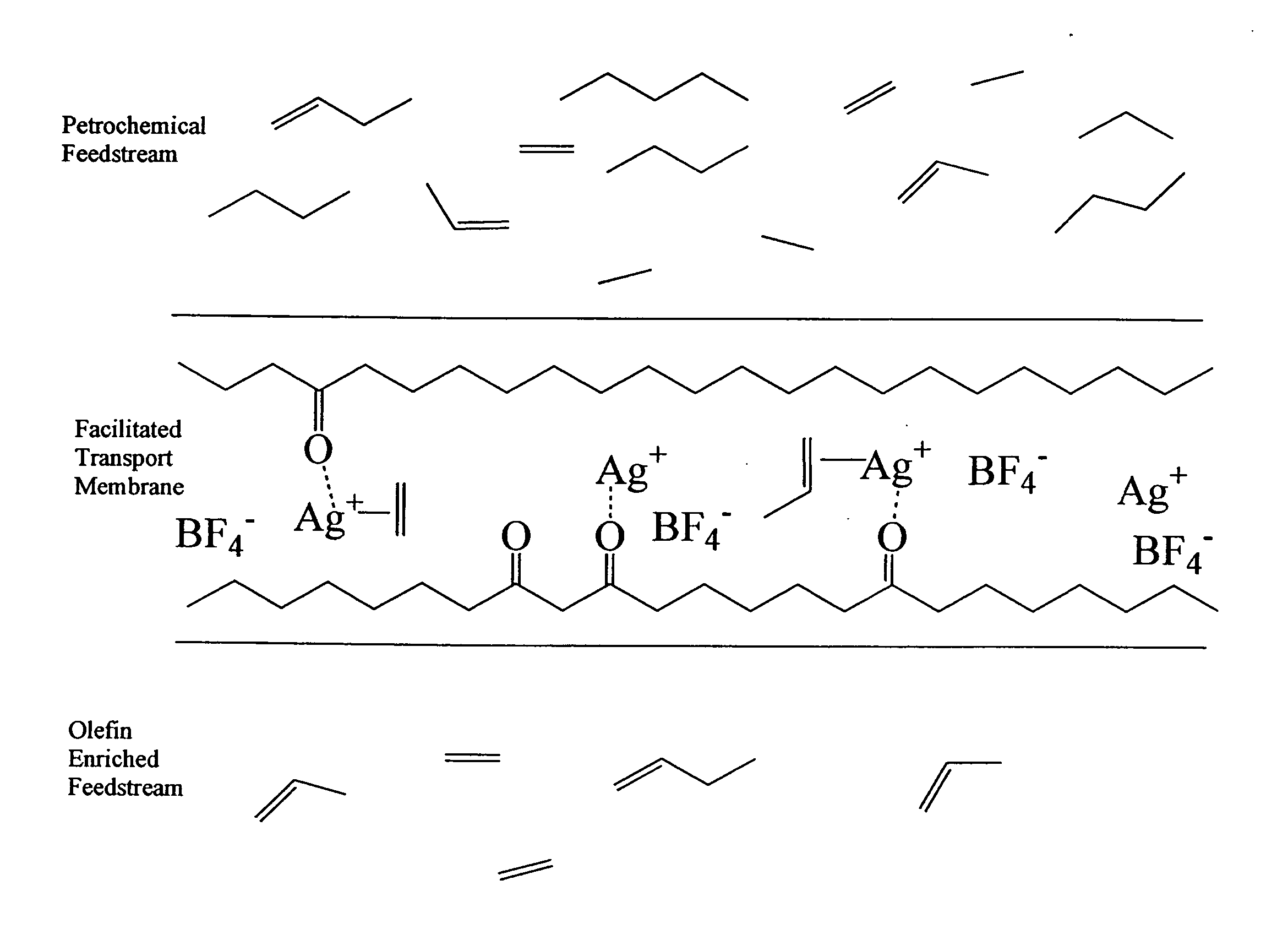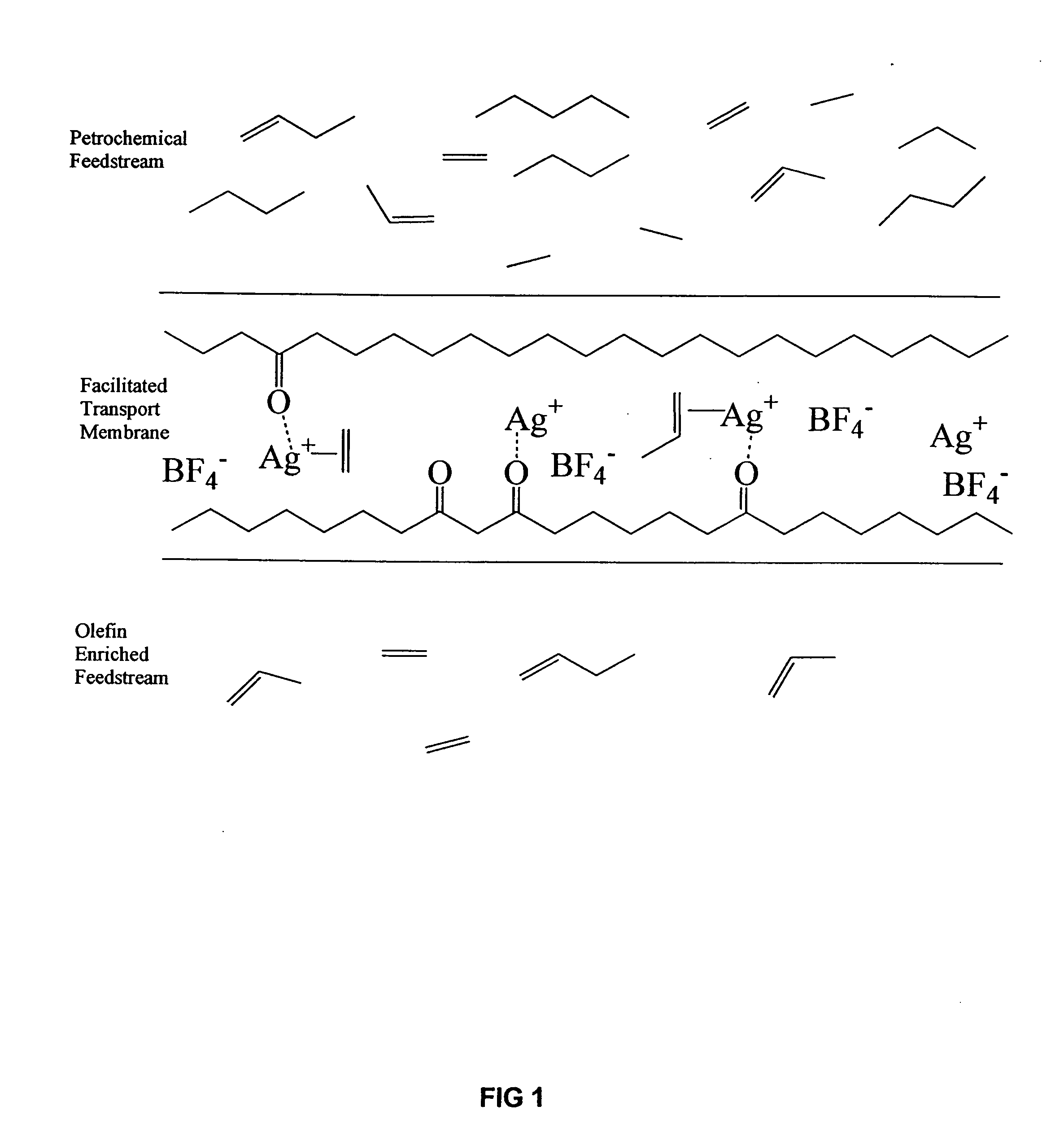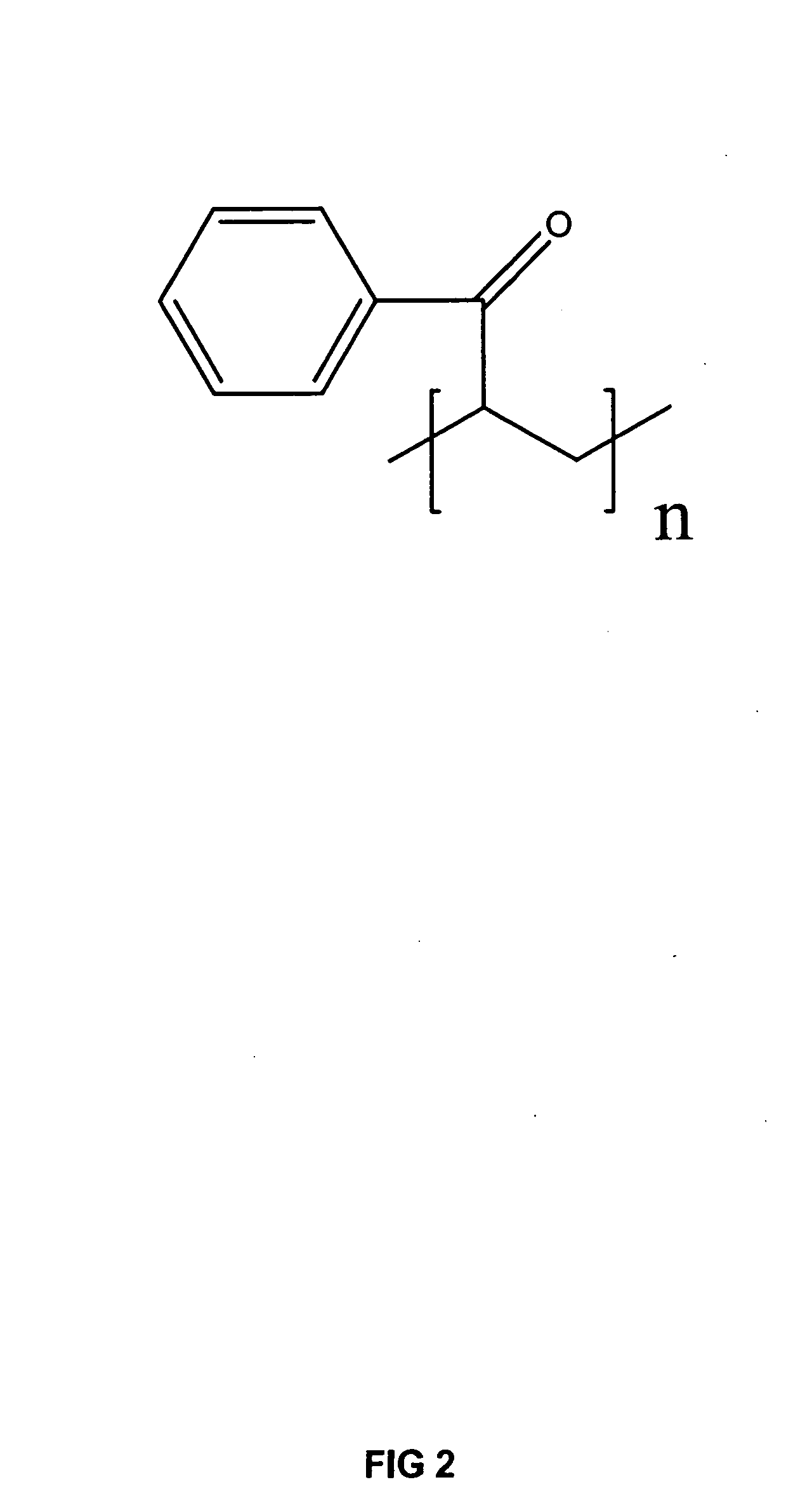Photoluminescent ethylene sensors
a technology of ethylene sensors and ethylene oxide, applied in the field of solid solutions, can solve the problems of premature rotting and attendant financial losses, inability to control the concentration of ethylene, inaccurate metal oxide sensors, etc., and achieve the effect of easy control
- Summary
- Abstract
- Description
- Claims
- Application Information
AI Technical Summary
Benefits of technology
Problems solved by technology
Method used
Image
Examples
Embodiment Construction
[0041] A commercially available, luminescent polymer suitable for use in the invention is poly(vinyl phenyl ketone) (PVPK, FIG. 2). This polymer is closely related to poly(vinyl methyl ketone), a polymer known to promote facilitated transport of alkenes. This inexpensive polymer was employed for proof-of-principle studies.
[0042] Initial studies explored the effect of silver doping on PVPK photoluminescence. A PVPK film, prepared on a glass slide by evaporation of an acetonitrile solution of the polymer, exhibited significant luminescence when excited with low intensity laser light (<1 mW). When excited at 488 nm, at the extreme edge of the absorption band, the polymer emitted at 575 nm. This pure PVPK film showed no response to changes in the ambient atmosphere from vacuum to 1 atm Ar or 1 atm ethylene (FIG. 3); the emission intensity and the wavelength of maximum emission remained constant. In subsequent experiments, the emission was monitored at 575 nm for response to changes in ...
PUM
| Property | Measurement | Unit |
|---|---|---|
| photoluminescence | aaaaa | aaaaa |
| photoluminescent | aaaaa | aaaaa |
| photoluminescent emission | aaaaa | aaaaa |
Abstract
Description
Claims
Application Information
 Login to View More
Login to View More - R&D
- Intellectual Property
- Life Sciences
- Materials
- Tech Scout
- Unparalleled Data Quality
- Higher Quality Content
- 60% Fewer Hallucinations
Browse by: Latest US Patents, China's latest patents, Technical Efficacy Thesaurus, Application Domain, Technology Topic, Popular Technical Reports.
© 2025 PatSnap. All rights reserved.Legal|Privacy policy|Modern Slavery Act Transparency Statement|Sitemap|About US| Contact US: help@patsnap.com



